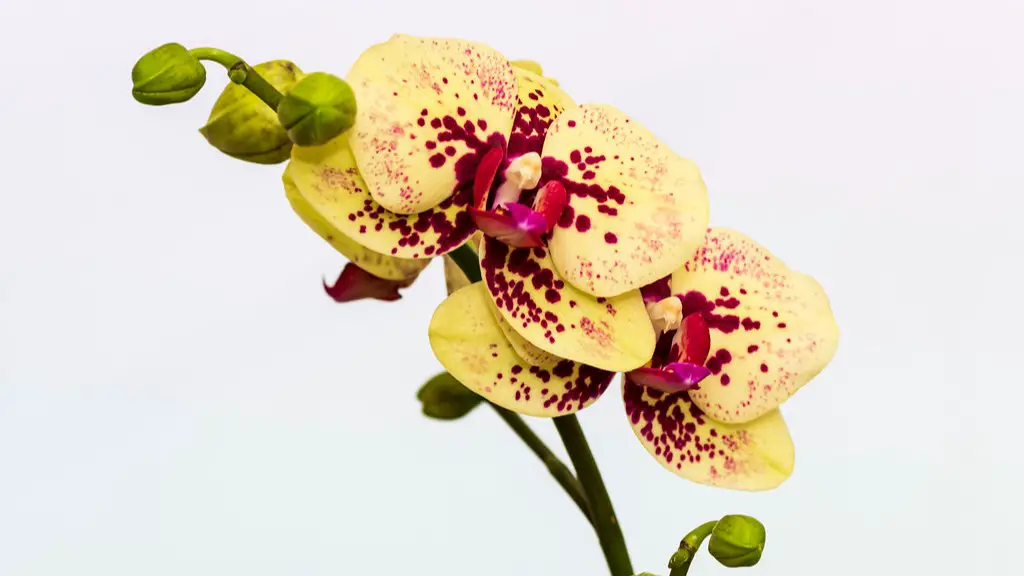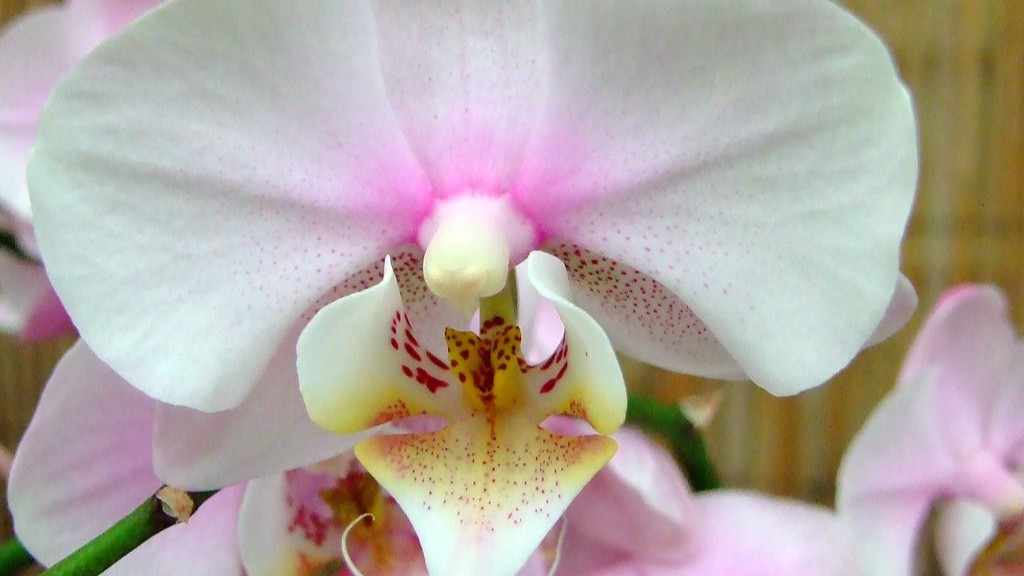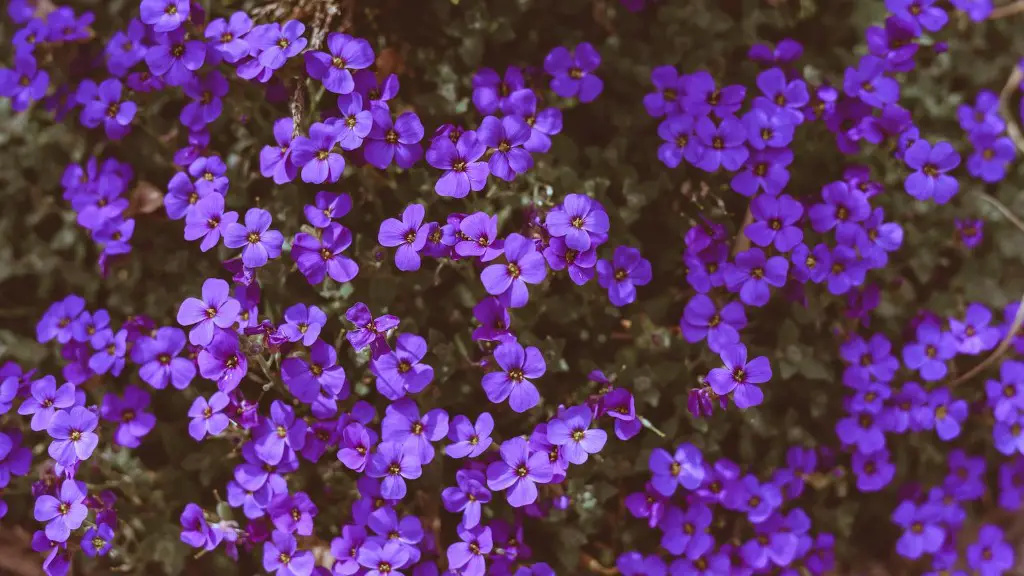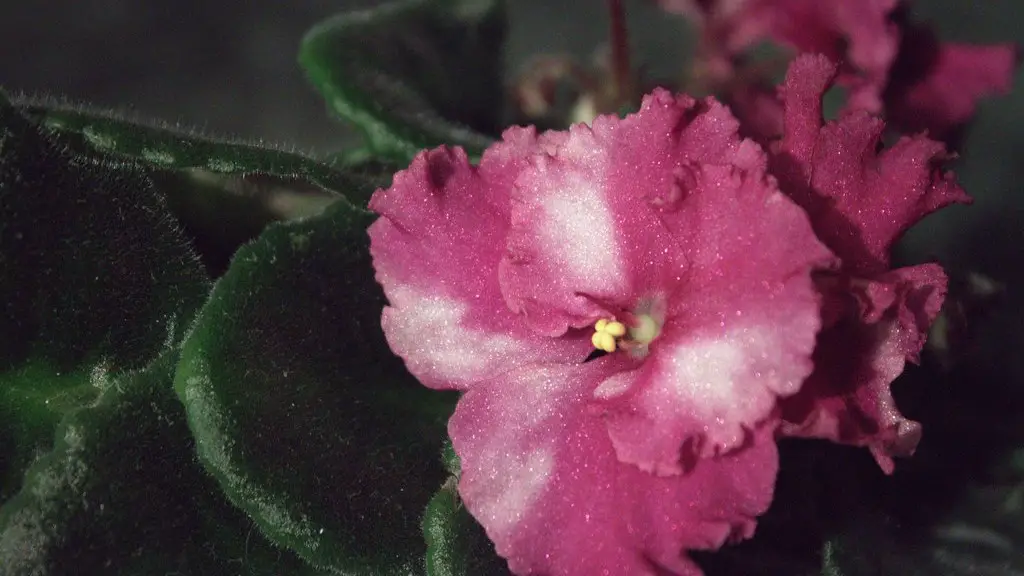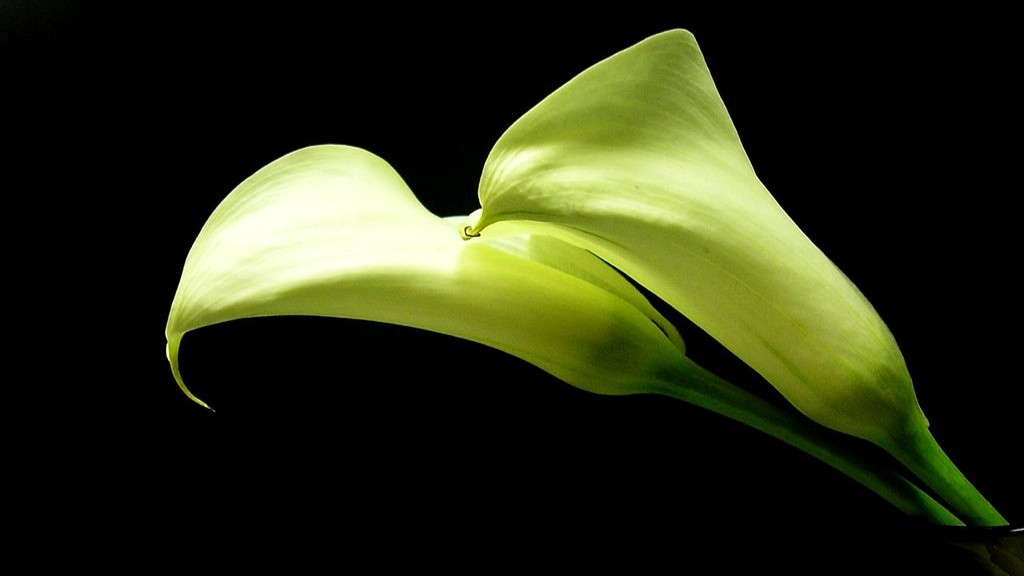In this guide, we’ll show you everything you need to know about taking care of a Phalaenopsis orchid! These orchids are popular for their beautiful flowers, and with proper care, they can bloom for several months. Although they’re easy to care for, there are a few things to keep in mind to make sure your orchid stays healthy and happy.
To take care of a Phalaenopsis orchid, water it once a week and fertilize it once a month. Place the orchid in an east- or west-facing window. Allow the potting mix to dry out between waterings.
How often should I water my Phalaenopsis orchid?
Water your phal when the top of the soil feels dry. If your plant is potted in bark, watering once a week is generally sufficient. If your plant is potted in moss, water more frequently. The amount of light and heat your plant receives will also affect how often your phal needs watering. Summer months will need more frequent watering, winter will need less.
Moth orchids (Phalaenopsis) are a popular choice for both beginner and experienced gardeners alike due to their long blooming period and ease of care. These orchids can bloom 2-3 times per year and their flowers can last anywhere from 2-6 months before dropping off. Although they are typically referred to as “moth orchids”, the flowers of Phalaenopsis more closely resemble that of a butterfly.
How do you keep Phalaenopsis orchids blooming
Orchids of the phalaenopsis variety are beautiful flowers that can brighten up any room in your home. These flowers are known to thrive in indirect sunlight, near any window with filtered sunlight. It is important to water phalaenopsis orchids every 7-10 days, and to fertilize them every month. The humidity level should also be kept high, and faded flower stalks should be trimmed.
Orchids are a beautiful and popular type of flower, but they can be tricky to care for. If you’re thinking about getting an orchid, or have one already, here are a few care tips to keep in mind:
1. Water weekly. Just because your orchid no longer has its blooms doesn’t mean you should stop watering it.
2. Fertilize. Giving your orchid the proper nutrients will help it stay healthy and potentially produce more blooms.
3. Give it plenty of indirect light. Orchids prefer bright, indirect sunlight.
4. Move your orchid to a cooler room. Orchids thrive in cooler temperatures, so moving it to a room that’s a bit cooler than the rest of your home can be beneficial.
5. Give some life to your dormant orchid. If your orchid hasn’t bloomed in a while, it’s not necessarily dead. With the proper care, it may start blooming again.
Should I mist my Phalaenopsis orchid?
Orchids are a beautiful and popular type of plant that thrive in humid conditions. The best way to recreate their natural habitat is by misting them with a spray bottle on a regular basis. This will help to keep the leaves and flowers healthy and vibrant.
Orchids are a beautiful and popular plant to have in the home. They are however, very particular about their watering needs and it is important to follow the proper method to ensure they thrive. Fill a tray with pebbles and place the orchid pots on top. Fill the tray with water, making sure that the water level is below the bottom of the pots. As the water evaporates, it will humidify the air around the plant, providing the perfect environment for your orchid.
What time of year does Phalaenopsis bloom?
orbit Phalaenopsis orchids bloom in the late winter through the spring. In late June and July, the Phalaenopsis orchids in our collection finally lose their blooms, some will remain in bloom for awhile longer. The ideal time to repot orchids is when they go out of bloom and Phalaenopsis is no exception.
A phalaenopsis orchid typically blooms for several months, and can be pollinated again during this period. It can take anywhere from 9 to 14 months for an orchid to complete a life cycle. If it does not die, it can typically re-bloom once every 8 to 12 months.
Why is my Phalaenopsis dying
There are several things that can cause orchids to wilt and die. It can be a lack of water, lack of fertilizer, lack of light or other factors. Overwatering can cause plants to wilt and die. Having the wrong growing medium can cause the orchids to wilt and die. With orchids, the wrong humidity levels can also cause problems that will damage or kill the plant.
Most phalaenopsis species are native to areas close to the Equator and do not need a specific photoperiod to induce flowering. Instead, it is the low temperature that triggers phalaenopsis to start the flowering process.
What triggers an orchid to bloom?
If you want your orchids to bloom, you need to make sure they’re getting enough light. While other factors like temperature and water availability can play a role, they won’t be successful unless the plants are getting enough light. So if you’re looking to get your orchids to bloom, make sure they’re getting plenty of light.
If you want your orchid to bloom again, follow these simple steps. Continue to water your orchid with 3 ice cubes once a week. Fertilize your orchid once or twice a month using a balanced houseplant fertilizer at half strength. Help your orchids grow by providing plenty of indirect sunlight. Put your orchid in a cooler spot at night. By following these tips, you should see your orchid begin to bloom again.
Can an orchid come back after losing all leaves
Orchids are one of the longest blooming flowers, with a lifespan of up to three months. However, with the right plant care, orchids can bloom even longer. Here are a few tips on how to get your orchids to rebloom:
1. Make sure to provide your orchids with proper light, water, and fertilizer. Orchids need at least six hours of sunlight per day, and should be kept in a humid environment.
2. You can encourage your orchids to rebloom by cutting back the old flower spike. This will promote new growth and prevent the plant from getting too leggy.
3. Orchids can also be encouraged to rebloom by changing their potting mix. Try using a mix that is rich in organic matter, such as sphagnum moss or bark.
With the proper care, orchids can bloom for years to come. Give your orchids the attention they deserve, and enjoy their beautiful flowers all season long!
If your orchid has an unhealthy, brown spike, you will need to cut it all the way back to the base of the plant. If your orchid has a double-spike, you will need to cut one spike at the base of the plant and the other spike 1 inch above the node under the lowest flower bloom.
Do Phalaenopsis orchids Rebloom on the same stem?
If you want your Phalaenopsis orchid to re-bloom, there are a few things you can do to encourage it. Start by cutting off the old flower spike, keeping the leaves and the plant itself healthy, and providing it with extra care, including regular fertilization. With a little TLC, your moth orchid should reward you with another bloom cycle.
The ideal spot to grow orchids is a south or east-facing window. usually, west windows are too hot while northern windows are too dark. Placing orchids under artificial lights is the last resort if you can’t find a good location to grow your orchids.
How long should I soak my Phalaenopsis orchid
It is generally recommended that you soak your orchid for about 10 minutes to saturate the roots. However, be sure to allow the water to drain out completely afterwards; orchids like a good soak but don’t tolerate sitting in water. Uneven watering will result in shallow or uneven root growth.
After you have watered your orchid, feel the weight of the container; it should be heavy. This indicates that the roots have taken up enough water and that your orchid is properly hydrated.
Watering your orchid too often can actually do more harm than good. If the plant is allowed to sit in still water, the roots can rot and the plant can eventually die. In many cases, it’s best to allow the plant to completely dry out between waterings.
Watering at night can also lead to problems. No matter what kind of orchid you grow, always water in the morning. This will give the plant time to absorb the water and nutrients before the temperature gets too hot.
Final Words
Phalaenopsis orchids are one of the most popular types of orchids, and they are also one of the easiest to care for. Here are some tips on how to take care of your Phalaenopsis orchid:
1. Water your orchid regularly, but make sure that the potting mix is always dry. Water your orchid about once a week, and mist the leaves daily.
2. Phalaenopsis orchids like bright, indirect sunlight. Keep your orchid in a spot that gets plenty of light, but not direct sunlight.
3. fertilize your orchid monthly with a balanced fertilizer.
4. Repot your orchid every two to three years, using a well-draining potting mix.
5. Orchids like humidity, so consider placing your orchid in a bathroom or near a humidifier.
By following these tips, you can keep your Phalaenopsis orchid healthy and blooming for years to come!
Orchids are one of the most popular houseplants, and the Phalaenopsis orchid is one of the easiest to care for. With proper care, your Phalaenopsis orchid can bloom for months at a time. Here are some tips for taking care of your Phalaenopsis orchid:
• Choose a location for your orchid that is bright, but not direct sunlight. East or west-facing windows are ideal.
• Water your orchid when the potting mix is dry to the touch. Be sure to use room temperature water.
• fertilize your orchid every two weeks with a balanced fertilizer.
• Mist your orchid daily, or set the pot on a tray of pebbles and water to increase the humidity around the plant.
• If your orchid blooms, cut the stem back to the first node after the bloom fades.
With a little bit of TLC, your Phalaenopsis orchid will thrive and provide you with beautiful blooms for months to come.
